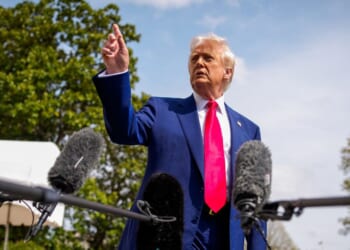Energy dominance, though a laudable goal, is problematic at a time when OPEC+ seems to be trying to shoehorn its own volumes into the market.
These are not good times in the American oil patch, with production costs rising, prices for oil falling, and new difficulties in exporting abroad. Share prices for pure-play U.S. upstream equities have moved down sharply during the recent market downturn, more than almost any sector other than technology. It is ironic, given the high hopes and campaign contributions that the domestic oil industry has invested in Donald Trump. Trump promised “energy dominance,” restoring federal acreage auctions, removing regulations, and getting rid of the Biden administration’s new tailpipe emissions standard which was set to force the U.S. automotive sector to sell mostly EVs by the mid-2030s. Trump also exhorted the Saudis to help lower oil prices.
The problem for the industry, in part, is that there is a lot of self-contradiction in Trump’s stated goals. Like any business, oil producers want to maximize profits and their return on capital, and need to keep those metrics at acceptable levels in order to attract capital. Per barrel production costs in U.S. shale production were already rising, as companies have to begin moving out to drill in less geologically-optimal acreage, and due to broad inflationary pressures and cost increases on factor inputs specific to the sector. Many analysts have suggested that $70 per barrel is the new $50 per barrel in terms of the price level which is necessary to keep us production growing by generating sufficient returns on capital. It is quite clear at this point that a sustained drop to $50 per barrel would actually cause U.S. production to contract as investment in new drilling activity ends up being curtailed.
While the Trump administration’s announcement of blanket new tariffs for most countries last week – subsequently paused for most countries, other than China – was not intended to undermine the energy dominance agenda, it clearly does. Most obviously, the broad perception that global economic activity will slow down as markets adjust to the tariffs has undermined market expectations of near-term demand, which has gone from an expectation of weak growth to fears of contraction during a recession. This has pushed West Texas Intermediate (WTI) crude, the primary domestic benchmark, down into the low $60s. It fell as far as the upper $50s earlier this week before Trump announced the pause on new tariffs ex-China.
But it also impacts upstream production costs by increasing the prices for imported goods . In addition, it effectively cuts off access to China, which had been a significant buyer of U.S. light sweet crude oil. American refiners really cannot absorb more of these grades, and they will find other export markets, but the net impact is likely to be having to offer slightly discounted prices. This impact could become much worse if the paused tariffs go into effect and the retaliatory tariffs enacted against U.S. exports become more widespread.
Given the positive relationship between crude oil prices and the health of the U.S. oil sector described here, and the inverse relationship between prices and the broader health of the U.S. economy (via inflationary pressures) at somewhat higher price points, there is a strong argument for an optimal price range at which U.S. interests are well-served. I would argue this is roughly $60-80 per barrel. Below $60, U.S. producers take a hit, while going too far above $80 would result in inflationary pressure in the broader U.S. economy. It was unwise of President Trump to talk about wanting the Saudis to open the spigot decisively and lower prices when we were already well within that desirable price range, but at higher price levels, such “jawboning” directed at Riyadh would make perfect sense.
In another irony, however, the Saudis now seem to sense that their long-term interests would benefit from a short period of lower prices. In recent years, especially since the pandemic and the OPEC+ production cuts, non-OPEC+ production growth has been able to satisfy relatively weak demand growth. Now, OPEC+ seems to be trying to shoehorn its own volumes into the market, despite the price impact.
Greg Priddy is a Senior Fellow at the Center for the National Interest and does consulting work related to political risk for the energy sector and financial clients. Previously, he was director of global oil at Eurasia Group and worked at the U.S. Department of Energy.
Image: Shutterstock/lusia83
















